The native honeysuckle, or woodbine, is probably our most exuberant wildflower. In early summer, country lanes are saturated with its perfume, and its brightly coloured flowers are an unmistakable sight. According to Shakespeare, Titania slept under ‘luscious woodbine’, Milton described it as ‘flaunting honeysuckle’ and for Keats it occupied the ‘summer thrones’.
The genus to which our native honeysuckle belongs is Lonicera, which contains about 180 species, over half of which are found in China and the rest distributed around Europe, north America and northern India.
Most Lonicera are twining or climbing plants but the genus does contain a large number of shrubs. Although the flowers of the shrubby honeysuckles are often highly scented, they are paltry compared to the flamboyant flowers of the climbing species.
Jump to
- When does honeysuckle flower?
- What to plant with honeysuckle
- How to plant honeysuckle
- Where to plant honeysuckle
- How to care for honeysuckle or lonicera
- Pruning honeysuckle
- Common problems when growing honeysuckle
- Propagating honeysuckle
- The best climbing honeysuckles to grow
- Yellow and white honeysuckles
- Pink honeysuckles
- Orange honeysuckles
- Shrub honeysuckles to grow
- Where to buy honeysuckle
When to prune honeysuckle
Pruning honeysuckle
Many forms of honeysuckle, including Lonicera periclymenum and its cultivars, flower on stems that have grown the previous year. In general, they flower early in the season. These should be pruned in mid to late summer, after the plant has finished flowering. For the best results, prune every year, in mid to late summer, after they have finished flowering.
- First, cut away any diseased, damaged or dead stems.
- Then cut back stems that have flowered by about one third.
- Stems at the top of the plant often become intertwined and tangled and these can be cut back to keep the honeysuckle in the space (more or less) where you want it to grow.
- Honeysuckles are not climbers that can be neatly trained so some unruly growth is inevitable (and is part of the plant’s charm).
- As always when pruning use clean secateurs with a sharp blade.
Later-flowering species, such as Lonicera japonica, Lonicera sempervirens, Lonicera x brownii and Lonicera henryi, do not need regular pruning. In the spring, remove congested or dead shoots and remove any long shoots that are creeping beyond the space you have available for the plant to clamber into.
Sometimes plants become bare at the bottom, with all the growth and flowers at the top. If this happens cut out a couple of the stems to about 60cm from the ground. This will encourage new growth lower down, while the remaining stems support growth higher up.
How to care for honeysuckle or lonicera
When does honeysuckle flower?
Many forms of honeysuckle, including Lonicera periclymenum and its cultivars, flower on stems that have grown the previous year. In general, they flower early in early summer, although some flower later. Shrubby honeysuckles such as Lonicera purpusii 'Winter Beauty' flower in winter.
What to plant with honeysuckle
In the garden, honeysuckles are often suggested as companions to roses but, unless you are growing them with a rambling rose that never gets pruned, I would avoid growing them with shrub roses and climbing roses because pruning the rose becomes impractical.
Although some of the shorter species can be grown up obelisks or strong supports, most honeysuckles look best when allowed to clamber along walls or fences. Ensure that there is enough of a gap between the wall and the support for the honeysuckle to twine around. Wherever you plant them, make sure it is in a place where you can luxuriate in their perfume and maybe even reach out and pick the flowers to suck the nectar.
How to plant honeysuckle
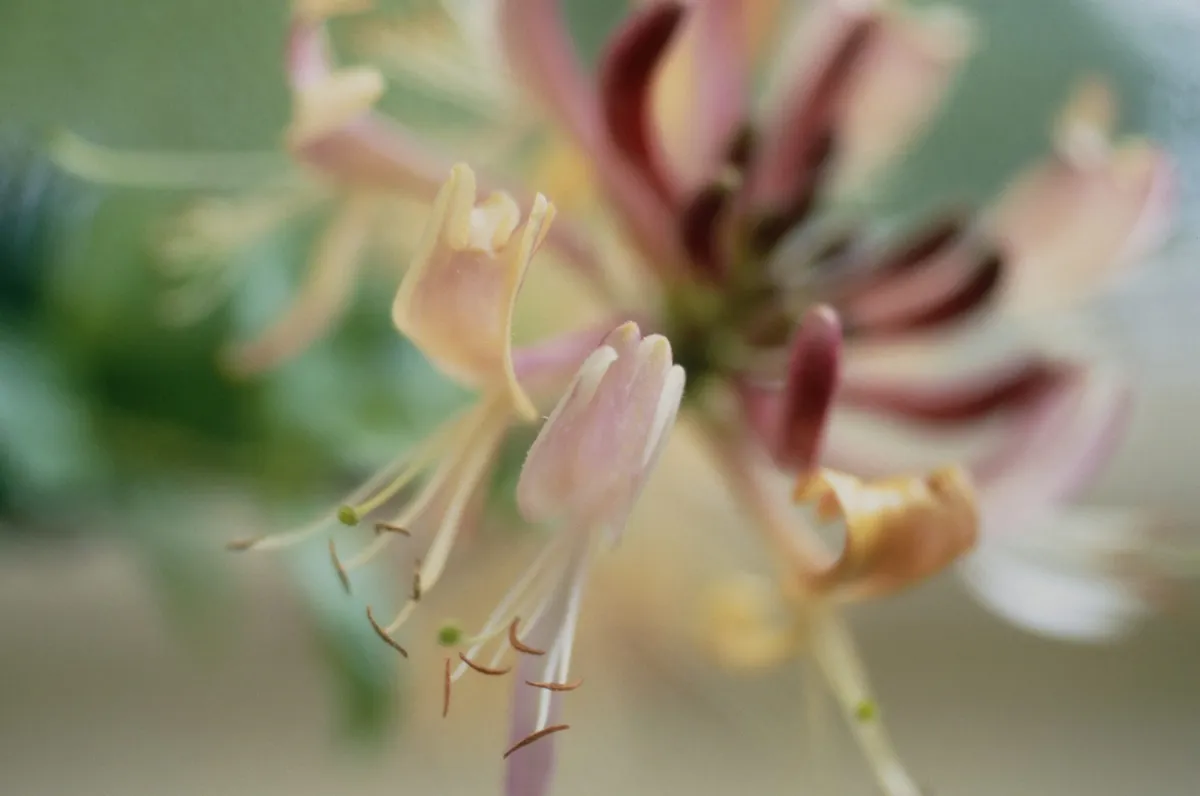
Where to plant honeysuckle
Honeysuckles will thrive in most soils. You don’t need the sunken lanes or high hedgerows that are home to wild specimens to succeed, but if you can mimic those conditions then your Lonicera plant will be very happy. The roots and base of the climbers prefer cool conditions, sheltered from the heat of the sun with a nearby wall, fence, obelisk or other structure that the plant can clamber up into the sunshine.
HONEYSUCKLE: PLANT PROFILE
What A group of twining plants with brightly coloured, often highly scented, flowers. The genus Lonicera also includes shrubby forms.
Common name Honeysuckle or woodbine.
Origins All are found in the northern hemisphere, mainly China, Europe, Asia and north America.
Season Summer flowering.
Size Mainly vigorous plants that will reach between 4m and 8m tall. In Northern Ireland, and in parts of the USA, Australia and New Zealand, Lonicera japonica is listed as an invasive species.
Conditions Lonicera fare best in a fertile, moist, free-draining soil in full sun or part shade.
Hardiness Most are hardy or very hardy.
Common problems when growing honeysuckle
Honeysuckles are attractive to aphids and plants grown in direct sunlight seem to be particularly susceptible, so try and grow your honeysuckle in a slightly shaded place. A west-facing wall or fence is ideal.
Propagating honeysuckle
You can propagate honeysuckle in two ways – by layering or by taking cuttings.
- To layer honeysuckle, bend a stem down to the ground or a pot, peg it into place then cover it with a little soil. The buried section will become an individual plant, which you can then dig up and pot on.
- Take semi-ripe cuttings from summer to early autumn – the base of the cutting should be firm, and the tip soft.
The best climbing honeysuckles to grow
Yellow and white honeysuckles
Lonicera periclymenum ‘Graham Thomas’
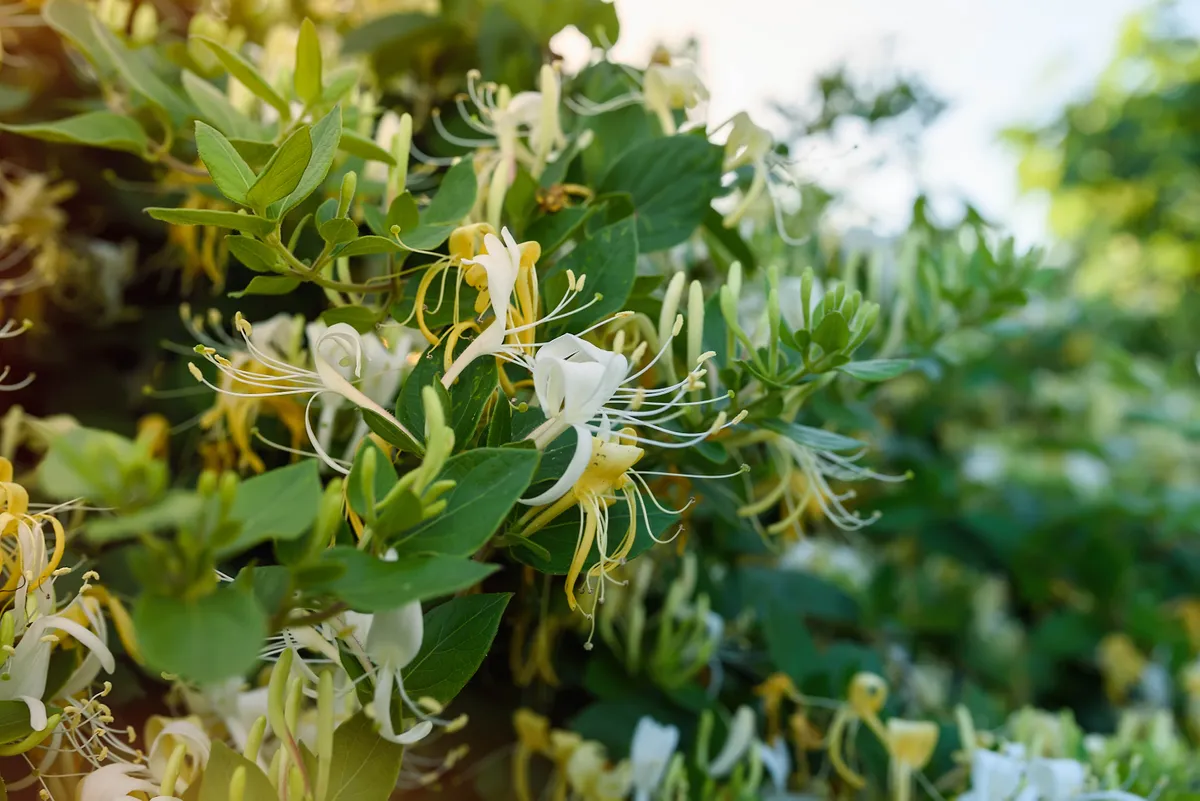
The elegant, strongly scented flowers are more muted than the species, being white when they open and fading to a creamy yellow. It has a long flowering season from July to September. It was found growing in a Warwickshire hedge in the 1960s and named L. periclymenum ‘Graham Thomas’ after the horticulturist, who, at the time, was gardens adviser to the National Trust. 8m. AGM. RHS H6, USDA 5a-9b.
Lonicera japonica ‘Hall’s Prolific’
True to its name, this is a vigorous and free- flowering cultivar with sweetly scented, pure- white flowers that fade
to a creamy yellow. The flowers appear in April and May, and are followed in the autumn by shiny, purple-black berries. 4m. RHS H5, USDA 4a-9b.
Lonicera x tellmanniana
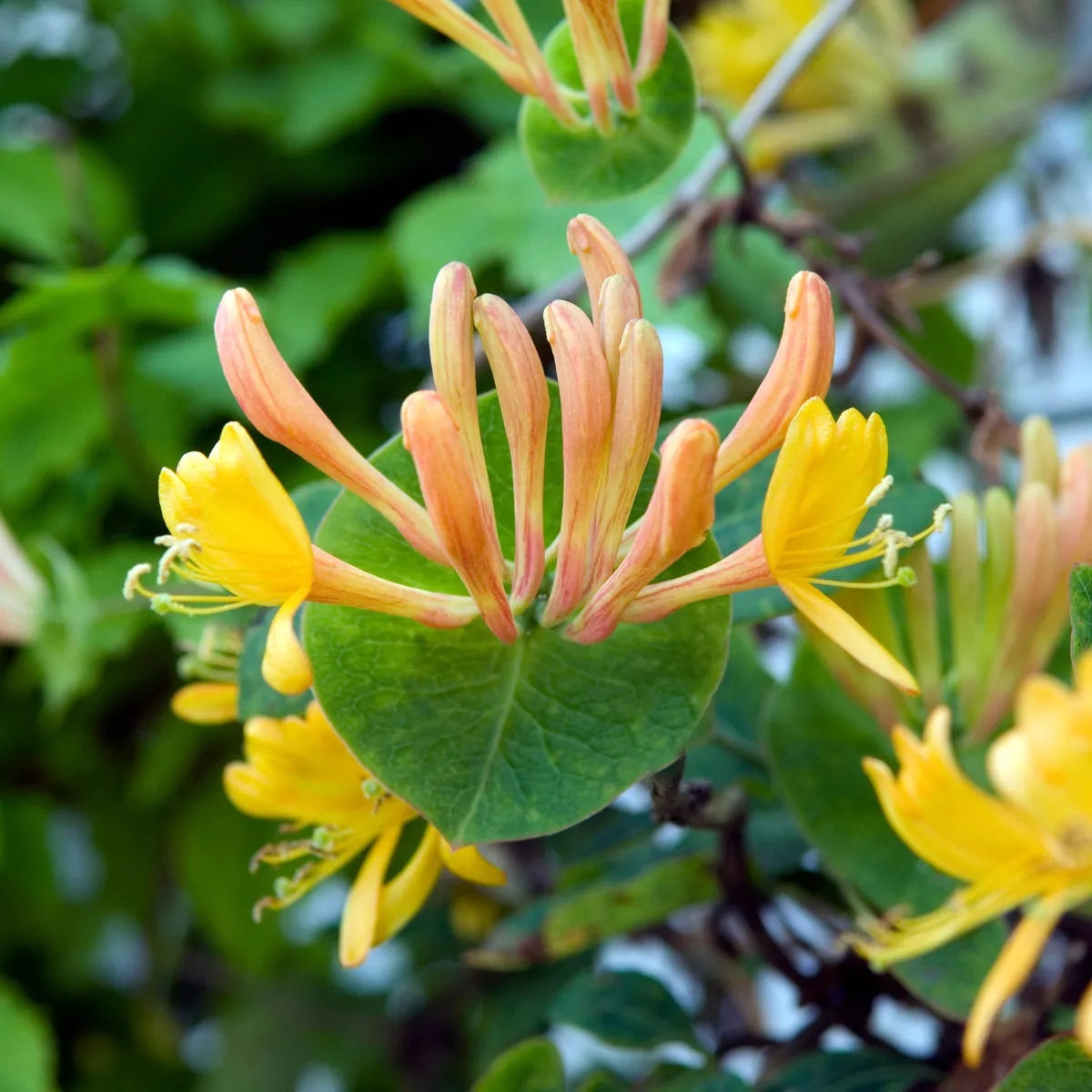
Although the flowers are unscented this is a superb hybrid, raised in Hungary in the 1920s. It is covered in 5cm-wide flowers from May to July. The buds have a red flush and open to reveal bright apricot blooms. 4m. AGM. RHS H5, USDA 4a-9b.
Lonicera etrusca ‘Superba’
A Mediterranean species that has been grown in gardens since the 18th century and which tolerates hot and dry situations better than other species. This cultivar has large, scented cream flowers that age to apricot. 4m. AGM. RHS H5, USDA 4a-9b.
Lonicera japonica ‘Mint Crisp’
A vigorous cultivar that is evergreen in mild winters. Its distinctive marbled foliage features dark markings on a paler green, and the leaves take on a pink sheen in autumn. The flowers are scented, opening white and fading to cream. 6m. RHS H5, USDA 4a-9b.
Pink honeysuckles
Lonicera periclymenum ‘Serotina’
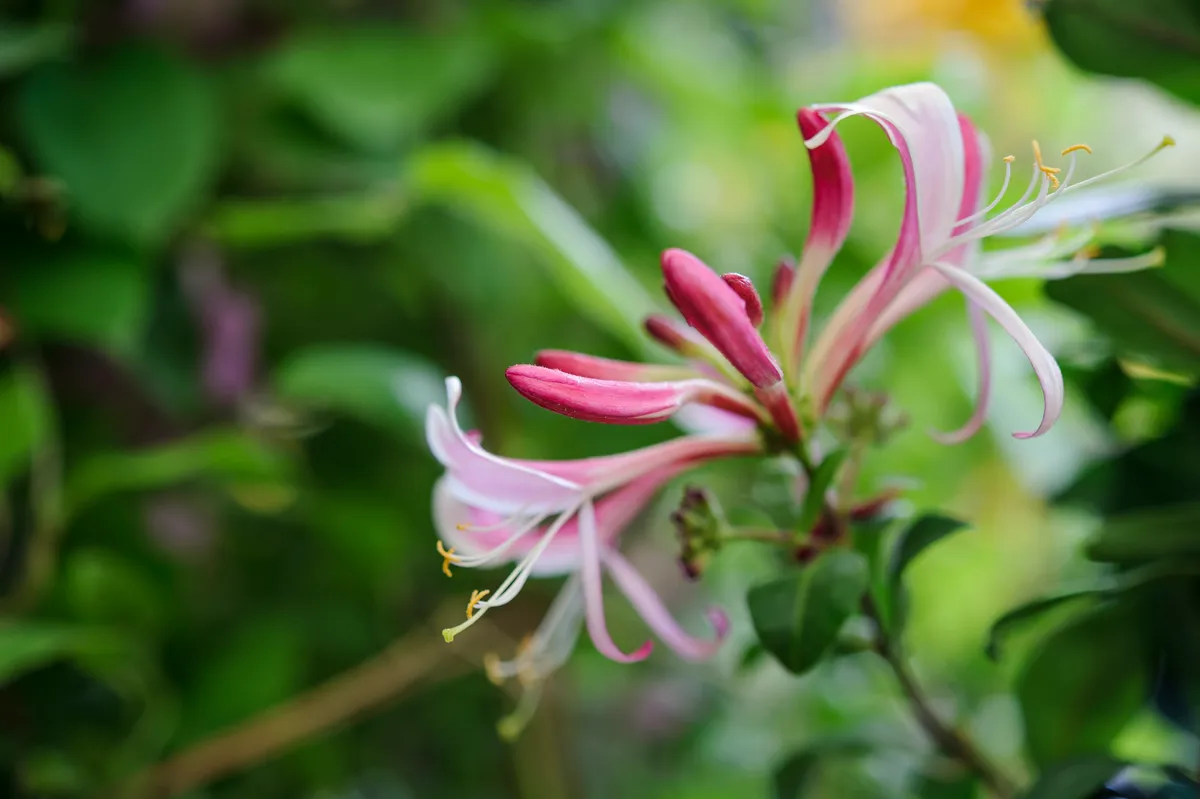
Known as the late Dutch honeysuckle, because it continues flowering longer than other cultivars, usually into October. The highly perfumed flowers are a deep reddish-purple on the outside and yellow within. 8m. AGM. RHS H6, USDA 5a-9b.
Lonicera x heckrottii ‘American Beauty’
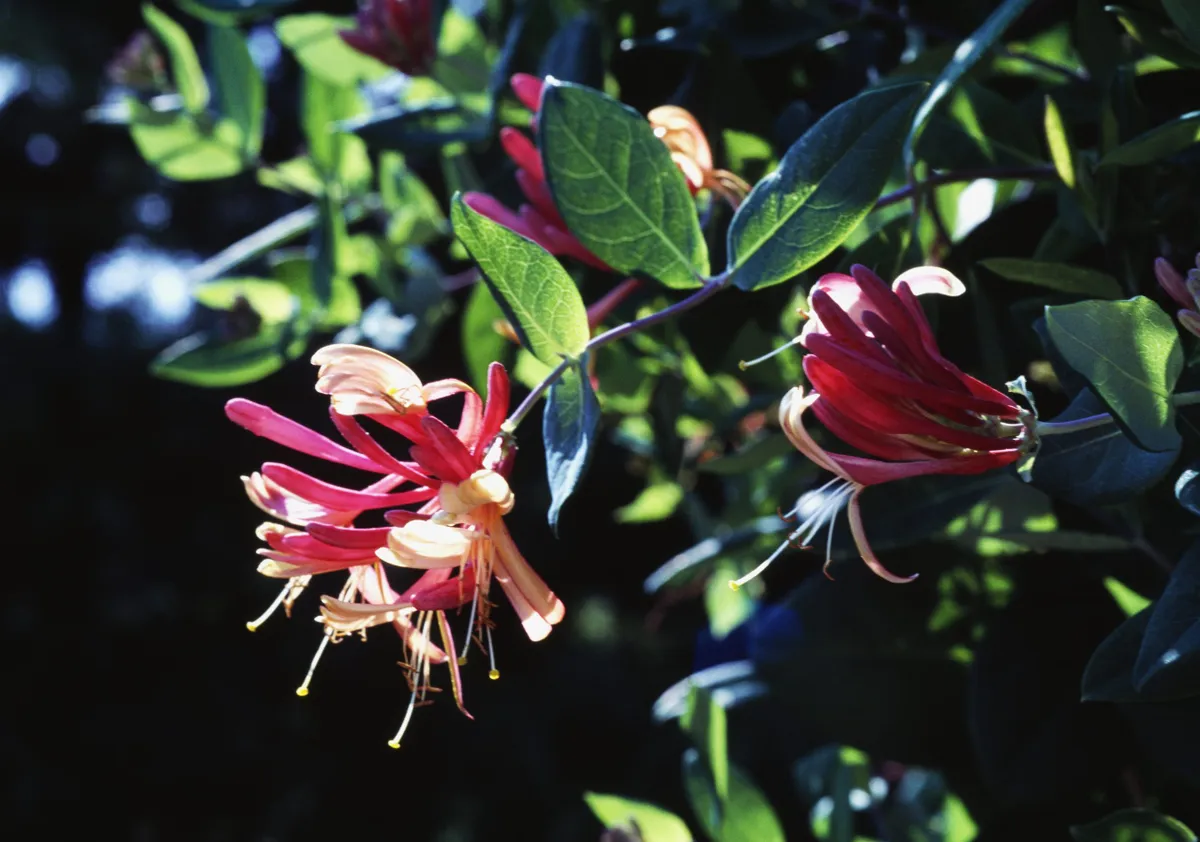
Hybrid honeysuckles often have little scent but this cultivar, sometimes sold as ‘Gold Flame’, has it in abundance. The flowers are bright orange on the inside and deep pink outside. Red berries follow in autumn. This Lonicera flowers June to August. 6m. RHS H6, USDA 5a-9b.
Lonicera periclymenum ‘Belgica’
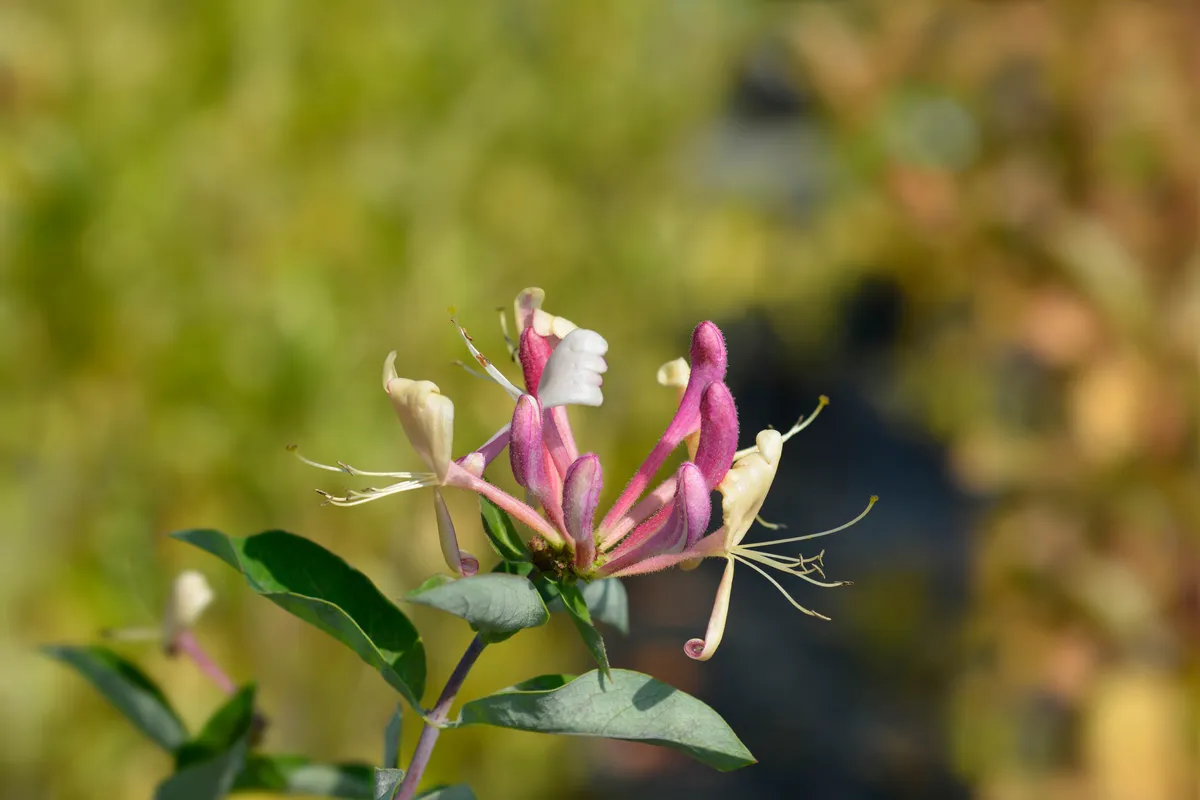
Before you see the flowers the rich, spicy perfume will have caught your attention. The flowers have a raspberry red exterior and age to a soft yellow in early summer, followed later in the year by shiny red berries. 6m. RHS H6, USDA 5a-9b†.
Lonicera henryi
A vigorous Lonicera species from western China with evergreen foliage that has downy new shoots, which are often flushed with bronze. The flowers, smaller than our native honeysuckle, are yellow with pink and red staining on the outer petals. 6m. RHS H6, USDA 5a-9b.
Lonicera x italica
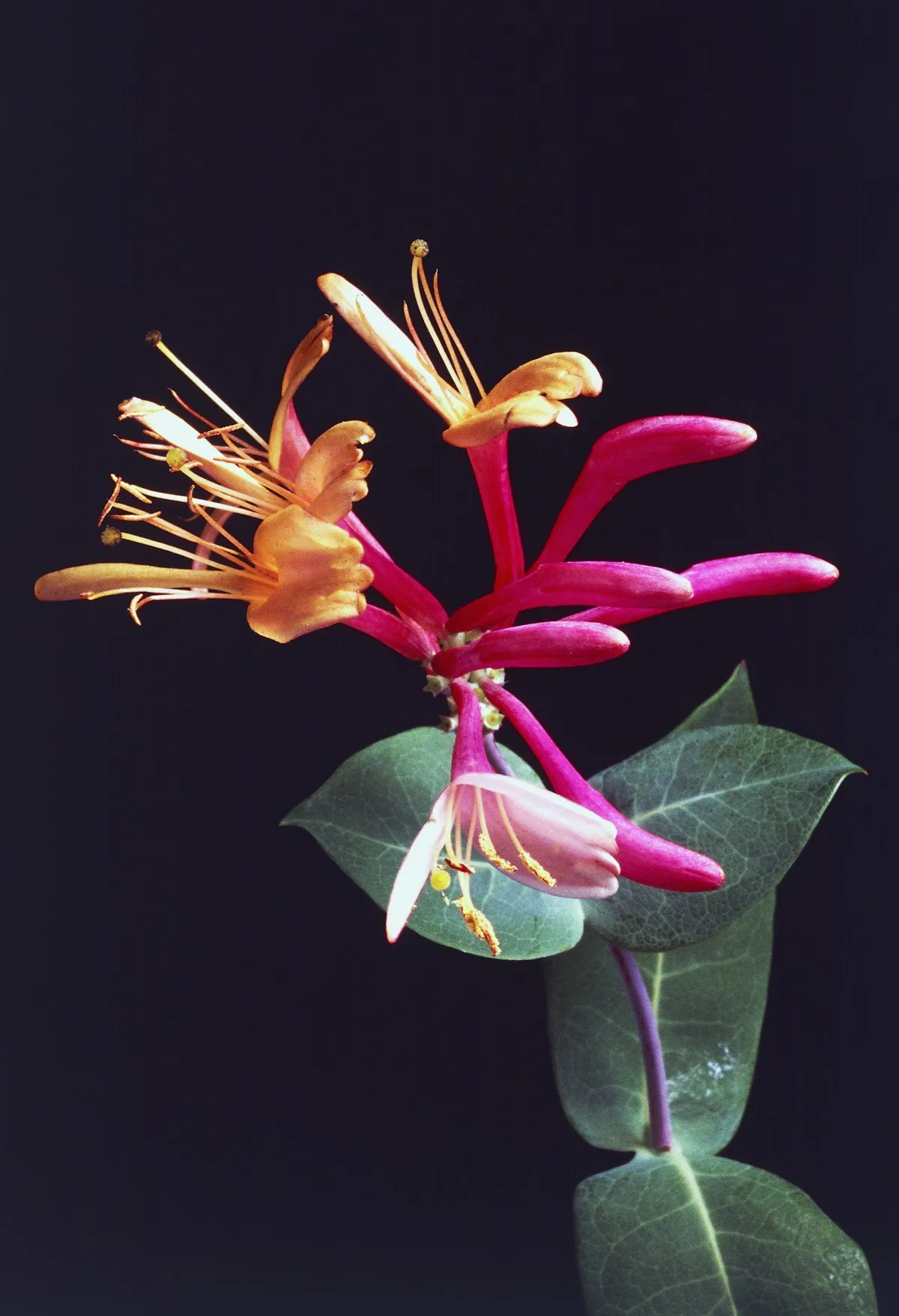
A floriferous and long-flowering Lonicera hybrid that has extremely fragrant, dusky-pink flowers that fade to yellow from May to August. To perform at its best, it needs to be grown in dappled shade in a well-drained, humus-rich soil. 5m. RHS H5, USDA 4a-9b.
Lonicera alseuosmoides
Another species from western China with elongated, dark-green leaves and tight clusters of scented, pale, purplish-pink flowers. The berries on this Lonicera, which appear in autumn, have a dark-blue sheen. In cold areas it tends to be deciduous. 4m. RHS H4, USDA 6a-8b.
Orange honeysuckles
Lonicera sempervirens
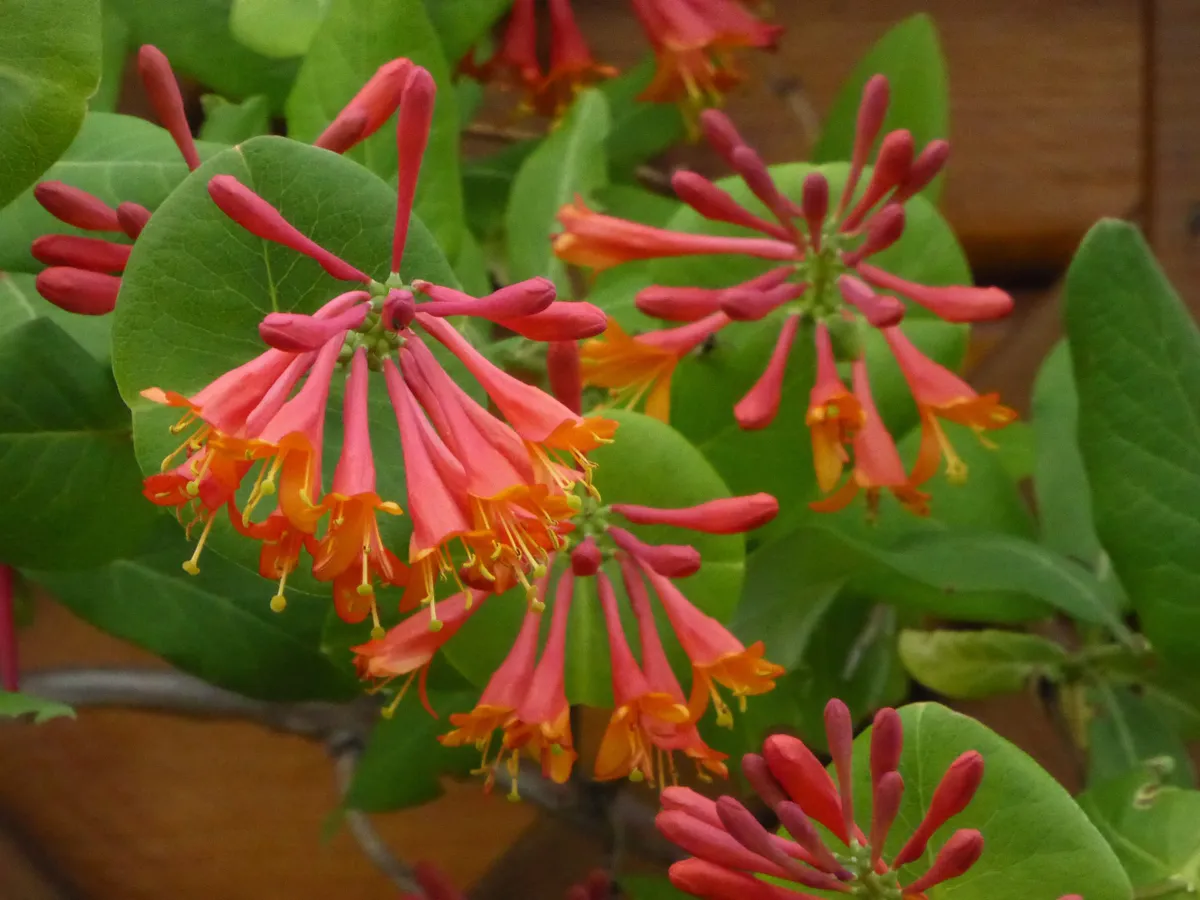
A striking and tough Lonicera species from the eastern USA and one of the parents of ‘Dropmore Scarlet’. The tubular flowers are sweetly scented, coral-red on the outside and orange inside. Flowers May to July, followed by fleshy red berries. 5m. AGM. RHS H5, USDA 4a-9b.
Lonicera x brownii ‘Dropmore Scarlet’
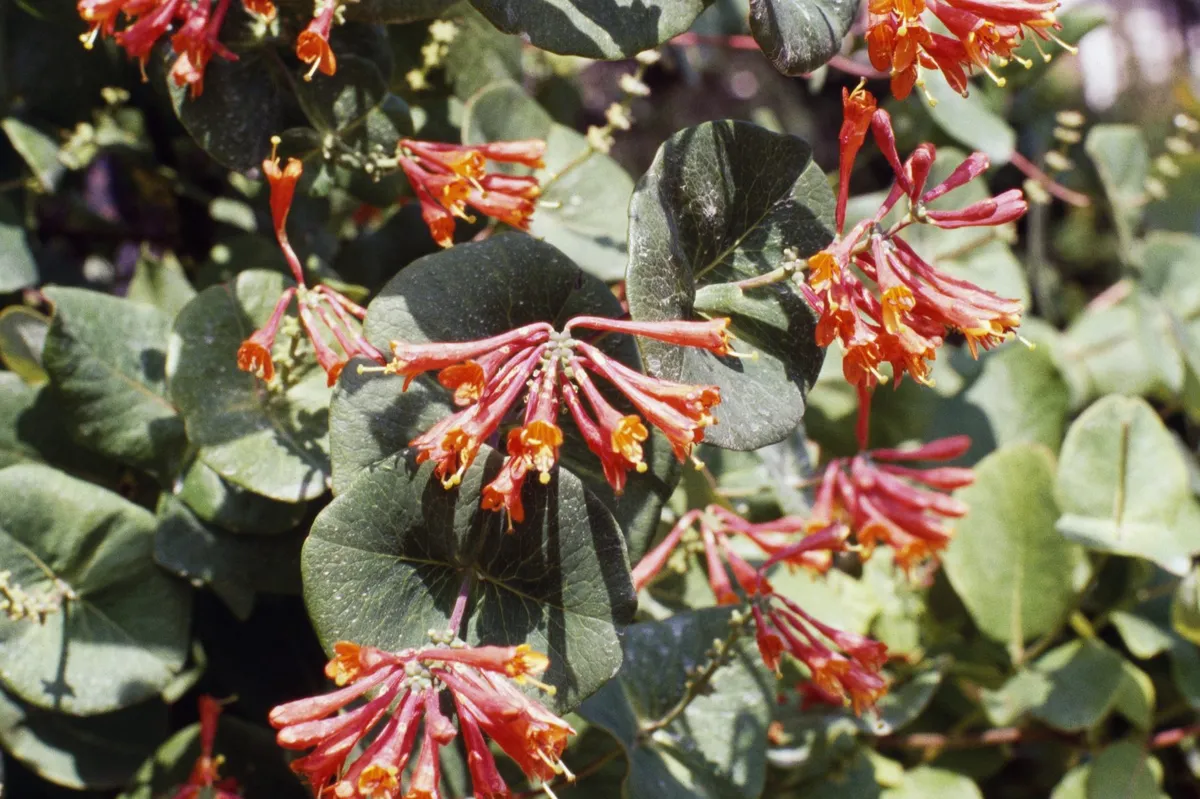
A distinctive Lonicera cultivar with flowers composed of clusters of 4cm-long narrow trumpets. The flowers are lightly scented with a scarlet exterior and glowing orange interior. The glaucous foliage enhances the plant’s beauty. 4m. RHS H5, USDA 4a-9b.
Shrub honeysuckles to grow
Lonicera standishii var. lancifolia ‘Budapest’
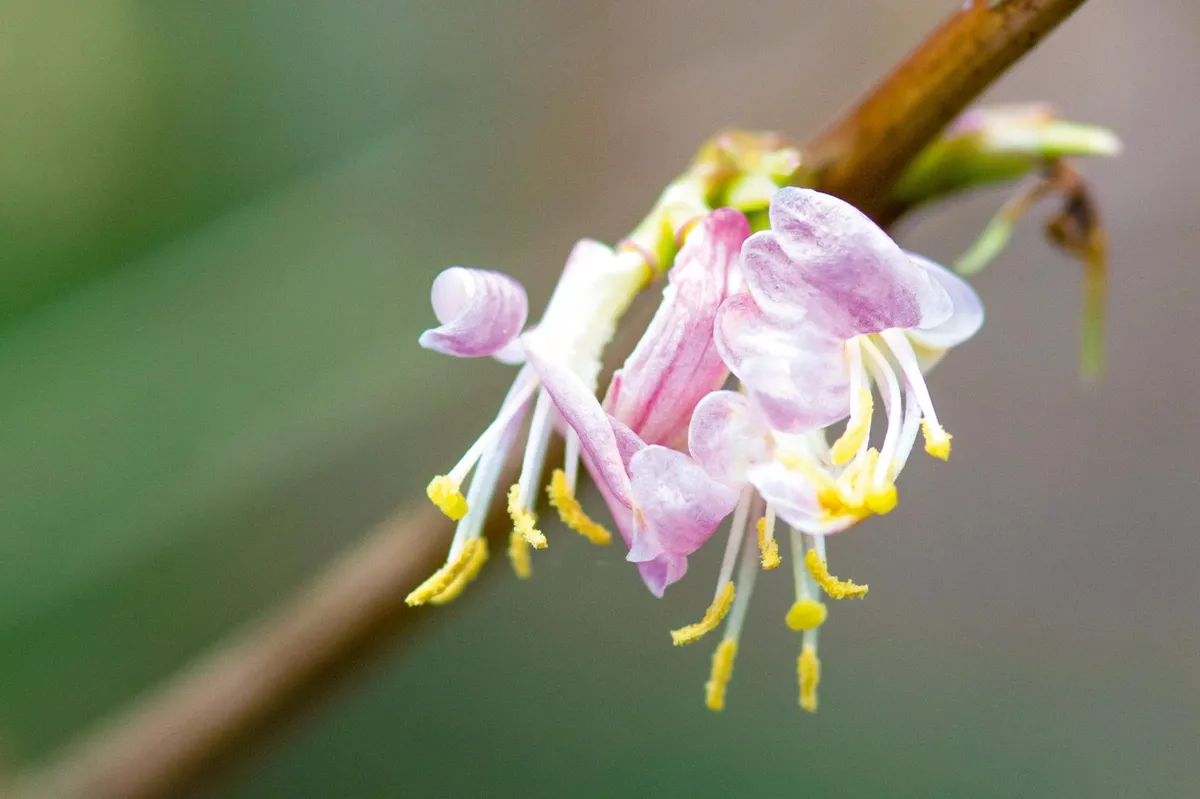
The hybrid Lonicera x purpusii may be better known but this has a neater habit. You can see the first flowers from November onwards, although they stop flowering for a while when it is freezing. During milder spells, you can enjoy the flowers, which sit in pairs or sometimes threes. The long, pale-yellow stamens are eye-catching and complement the ivory-based, mauve-pink flowers. They have an exquisite lemony scent, so plant this along a frequently used path or near a doorway. Chosen by Hans Kramer.
Lonicera x purpusii 'Winter Beauty'
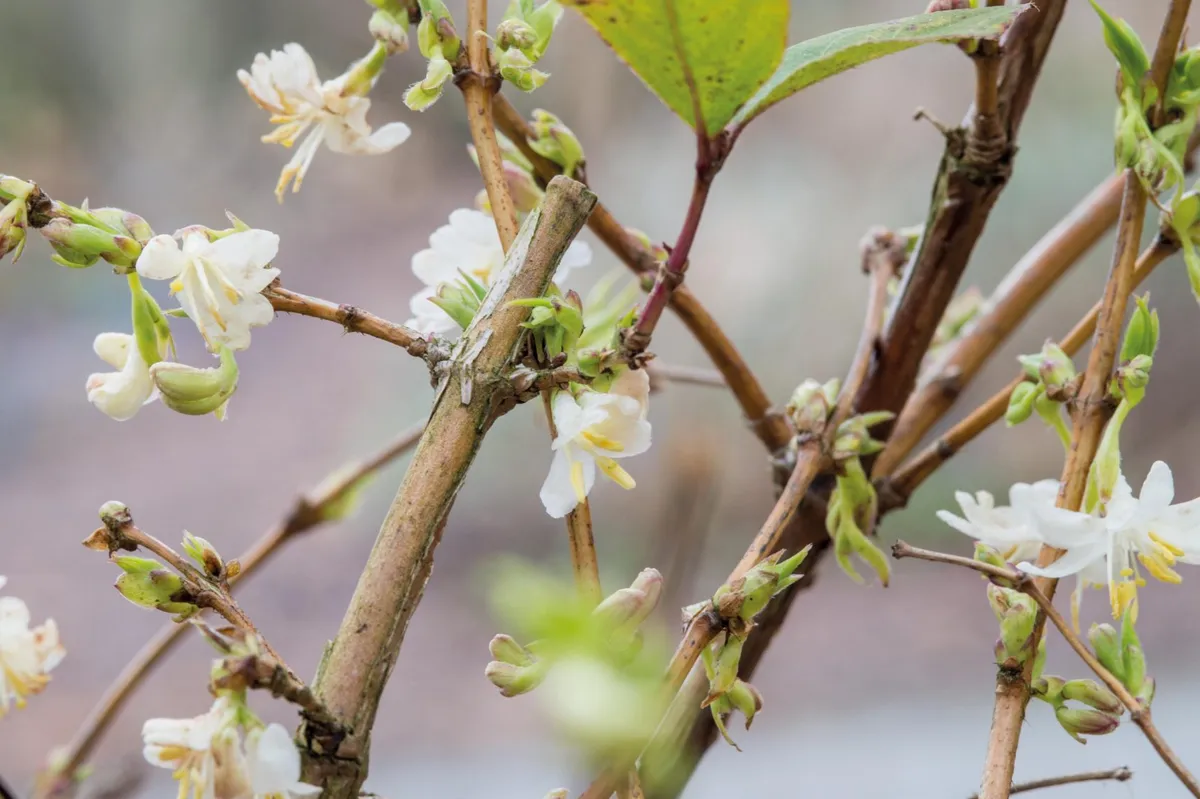
Winter can be hard for those of us who love to bring flowers into the house. Thank goodness then for Lonicera x purpusii ‘Winter Beauty’, which is so highly fragrant a single branch can transform your house. In temperate climates the shrubby honeysuckle is semi-evergreen with beautiful, dark-green leaves, and produces dark-red berries in the summer. The rough-textured grey bark on old stems makes it even more appealing. Grows to 2m and is a cross between Lonicera fragrantissima and Lonicera standishii (1920). The honeysuckle needs moist but well-drained soil; full sun or part shade. Happy in winter to early spring. RHS H6, USDA 5a-9b. Chosen by Hans Kramer.
Where to buy honeysuckle
• Ashridge Trees*, ashridgetrees.co.uk
• Burncoose Nurseries, Gwennap, Redruth, Cornwall TR16 6BJ. Tel 01209 860316, burncoose.co.uk
• Floyds Climbers & Clematis*, Tel 01249 823200, floydsclimbers.co.uk
• Groves Nurseries and Garden Centre, West Bay Road, Bridport, Dorset DT6 4BA. Tel 01308 422654, grovesnurseries.co.uk
• Kelways Plants, Picts Hill, Langport, Somerset TA10 9EZ. Tel 01458 253352, kelways.co.uk
• Larch Cottage Nurseries, Melkinthorpe, Penrith, Cumbria CA10 2DR. Tel 01931 712404, larchcottage.co.uk
• Peter Beales Roses, London Road, Attleborough, Norfolk NR17 1AY. Tel 01953 454707, classicroses.co.uk
*Mail order only
For more on honeysuckle, don't miss our round up of the best climbing plants.
